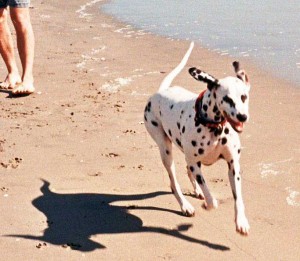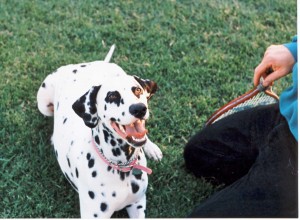Make Lasting Tribute to Your Pet by Donating Your Pet’s Body
Losing a pet is like losing a family member. One way to honor your companion animal is by donating his or her body to a veterinary school. Not only will your donation teach a student about anatomy, it will also encourage a commitment to humane treatment of animals.

A growing number of veterinary school now offer willed body programs, similar to ones that medical schools have been using for decades.
Veterinary schools are turning to the willed body model of obtaining cadavers out of ethical concern about using bodies from other sources, such as: animal shelters; breeders who breed animals for research or teaching; the greyhound industry (retired dogs); or biological supply companies. Using animal bodies that have been willingly donated fits with a more humane philosophy.
Donated cadavers are stored in cold storage until needed and then dissected by veterinary students. Students learn about anatomy and gain technical skills of working with a real body. Most schools have a ceremony to honor the pets in the program. The remains are then cremated. Schools may offer the option of having the ashes returned to you. Otherwise the ashes are usually scattered at sea.
By donating your pet’s body, you are supporting ethical treatment of animals and the training of future veterinarians. An added benefit is that you usually do not have to pay for any cremation services. More important is the lasting tribute you make to your pet through education that improves the health and well being of other animals. Read about our experience donating our dog’s body.
According to the Humane Society the following schools have programs
- University of California at Davis
- Texas A&M University
- Tufts University
- University of Florida (for large animals only)
- University of Pennsylvania
- University of Wisconsin at Madison
- Western University of Health Sciences
You may check other schools directly as well.

Pet owners arrange for their animal’s body to be donated by talking to their veterinarian ahead of time and filling out some paperwork. The process is simple.
Obtain information from the school nearest you for the details of its program. The school will provide you with paperwork to fill out.
Let your veterinarian know of your plans. If you bring your pet in for euthanasia, bring the paperwork with you. Be sure to bring directions from the school about how the body will be picked up.
Tell your veterinarian to include the pet’s charts with the body. This will help the veterinary student to gain as much information as possible about the animal and will enhance the educational opportunity.
If you like, write a few short paragraphs about your pet to include with the chart as well as a photo. The student will gain not only scientific knowledge and technical skill, but also a deeper philosophical of the value of a pet’s life. We did this.
Inquire if the school has any ceremony, publication or other tribute that you can participate in to help honor the pet. Finally, let others know about your experience. I take great comfort in knowing that a veterinarian student’s knowledge was furthered by our donation of Molly’s body. Read about our experience.
Related posts on my site:
How to Cope with the Loss of a Pet
How to Help Kids Say Goodbye to a Pet
find my eHow How to Cope with the Loss of a Pet
If you found this information helpful, please pass on a link.
Let me know what you think by commenting below. Show your support by “digging” this post. Just click the digg button above.